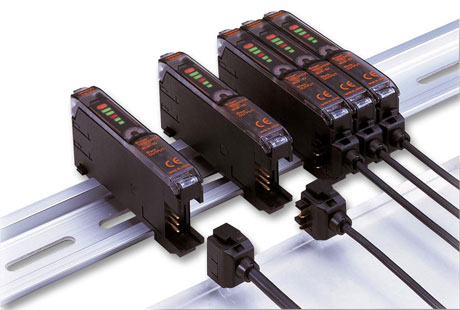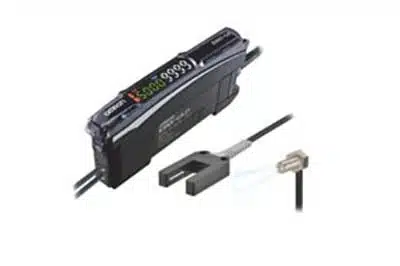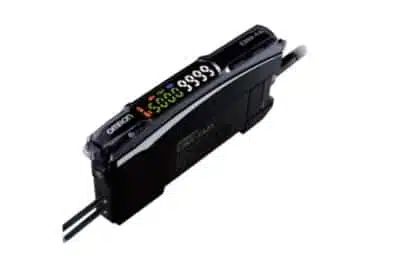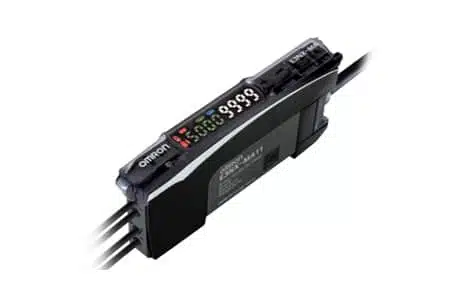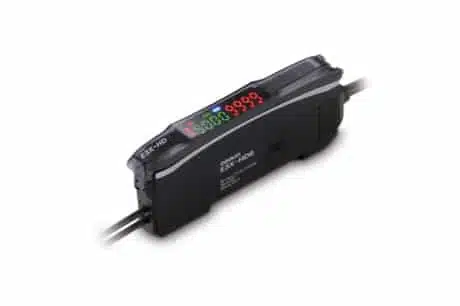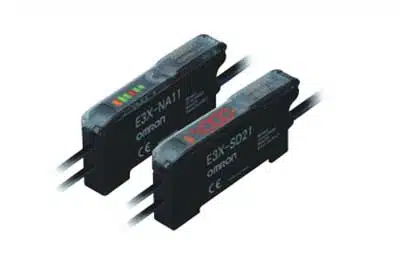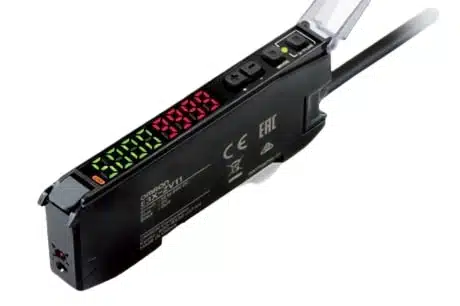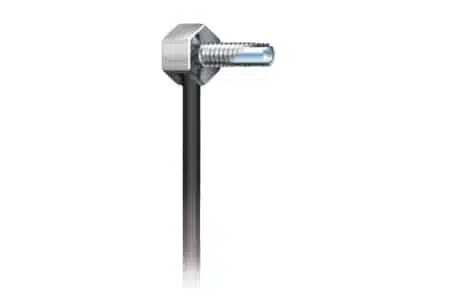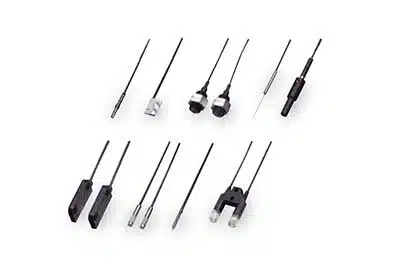Omron Fiber Optic Sensors: Amplifier & Optical Sensor
Explore the extensive collection of Omron fiber optic sensors at IndMALL Automation, designed specifically for tight, challenging, or distant locations. Our range includes both Omron optical fiber sensor modules and amplification systems. These devices channel light through fibers from the amplifiers, guaranteeing peak performance even in constrained spaces.
Select Omron fiber sensor solutions for unmatched precision and dependability. At our competitive price points, access top-tier Omron fiber sensor innovations without straining your finances. Whether you’re in the market for Omron fiber optic sensor units or specialized amplifiers, turn to IndMALL Automation as your premier choice.
Omron Fiber Optic Sensors: E3NX-CA Series
The Omron E3NX-CA fiber optic sensors provide wide-range light reception and precise intensity, adeptly identifying color variations in reflective packaging via enhanced N-Smart Technologies and an RGB function.
E3NX-CA Series
Omron Fiber Amplifier: E3NX-FA Series
The Omron E3NX-FA series, a Smart Fiber Amplifier, is celebrated for its ultra-stability, user-friendliness, and reliability, offering seamless setting of optimal thresholds and modes with flexible fiber unit selection.
E3NX-FA Series
Omron Fiber Optic Sensor Amplifier: E3NX-MA Series
The Omron E3NX-MA series excels with space-saving, stable detection, and high performance, featuring technologies for basic performance, ease of operation, reliable function, work-saving wiring, and logical operation control output.
E3NX-MA Series
Omron Fiber Sensor: E3X-HD Series
Omron’s E3X-HD Fiber Sensor ensures long-term stable detection without maintenance, utilizing GIGA RAY II for optimal detection in all scenes, and features Smart Tuning and energy-saving Smart Eco-Drive.
E3X-HD Series
Omron Optical Fiber Sensor: E3X-SD / NA Series
Omron presents the E3X-SD/NA Series, a fiber optic amplifier unit featuring GIGA RAY installation and Quick-Tuning, each function dedicatedly controlled by a unique key for user-friendly operation.
E3X-SD / NA Series
Omron Fiber Optic: E3X-ZV / MZV Series
Omron features user-save, symbol-operational buttons, and DPC, ensuring stability and ease in tuning, while its 2-channel model dramatically reduces installation space and wiring with noteworthy efficiency.
E3X-ZV / MZV Series
Fiber Optic Sensor Omron: E32-LT11N / LD11N / LR11NP Series
Omron’s E32 LT11N, LD11N, and LR11NP Fiber Units, featuring a wrench non-contact cable and a comprehensive hex-shaped lineup without lenses, ensure long-term stable detection in dusty environments and minimize false detections from scattered light.
E32-LT11N / LD11N / LR11NP Series
Fiber Sensor Omron: E32 Series
The Omron E32 fiber optic sensor cable is part of the standard fiber sensor lineup.
E32 Series
Some Frequently Asked Questions
What is a fiber optic sensor?
A fiber optic sensor is a special tool that uses light to measure things. It’s like a tiny and smart flashlight that can tell us important information. Imagine a very thin wire, but instead of electricity, light travels through it. This tiny wire is called an optical fiber.
When light moves through this fiber, it can change if it meets something different on its way. For instance, if it crosses a liquid or air, the light can bend or bounce back. The fiber optic sensor notices these changes and can tell us something, like if there is something in the way or if something is moving.
In some cases, we might use these sensors to see things that are too tiny or too far away. They are really good at noticing even the smallest changes in the light. So, we might find them in places like factories, cars, or even hospitals, helping in many different ways. For example, they can help ensure a machine is working right or monitor the health of a patient.
In short, fiber optic sensors use light traveling through small fibers to notice changes in their surroundings. This helps us monitor, detect, and measure various things in different situations, making these sensors quite helpful in lots of areas in our lives.
What are the two types of Fibre optic sensors?
Fiber optic sensors come in two main types: intrinsic and extrinsic. Both types use light to gather information and are very useful in different ways.
Intrinsic fiber optic sensors use the light that travels inside the fiber to sense things. Imagine a tiny rope that carries light, instead of being solid. When something changes the light inside this tiny rope, the sensor notices it. This change can tell us about things like pressure, temperature, or if something is bending. So, intrinsic sensors help by noticing changes directly where the light is traveling.
Extrinsic fiber optic sensors use the light to sense things outside of the fiber. Think of it as a flashlight that sends light out and watches what comes back. This type uses the light from the fiber to look at something else and then sees how the light changes when it comes back. This way, extrinsic sensors can tell us about the things the light touched or saw, like its color, or if it’s moving.
In summary, intrinsic fiber optic sensors notice things by watching light inside the fiber, and extrinsic sensors observe by checking how light changes after it leaves the fiber. Both types provide unique and important ways to understand and interact with the world around us, using the special properties of light.
What are the disadvantages of fiber optic sensors?
Fibre optic sensors are very useful, but they also have some disadvantages that we should consider. They’re not perfect for every situation and sometimes can be tricky to use.
One disadvantage is that fiber optic sensors can be expensive. Buying them and setting them up might cost more money than other types of sensors. So, using them in some places might not be the best idea if we want to save money.
Another problem is that they can be sensitive to damage. If the fiber gets bent too much or broken, it might stop working. This means we have to be really careful with them and make sure they’re protected so they can do their job properly.
Also, fiber optic sensors might not work as well with some measurements. Sometimes, they might have trouble telling us accurate information about really high temperatures or high pressures, especially when compared to some other types of sensors.
Lastly, installing and using fiber optic sensors can sometimes be complicated. People might need special training to use them properly and make sure they’re giving us the right information.
In a nutshell, while fiber optic sensors are handy, they can be costly, delicate, possibly less accurate for certain measurements, and require careful handling and knowledge to operate. This doesn’t mean they aren’t useful, but it’s important to know when and how to use them best.
Discover our selection of Omron Fiber Optic Sensors and share your needs at +91 79955 44066.

